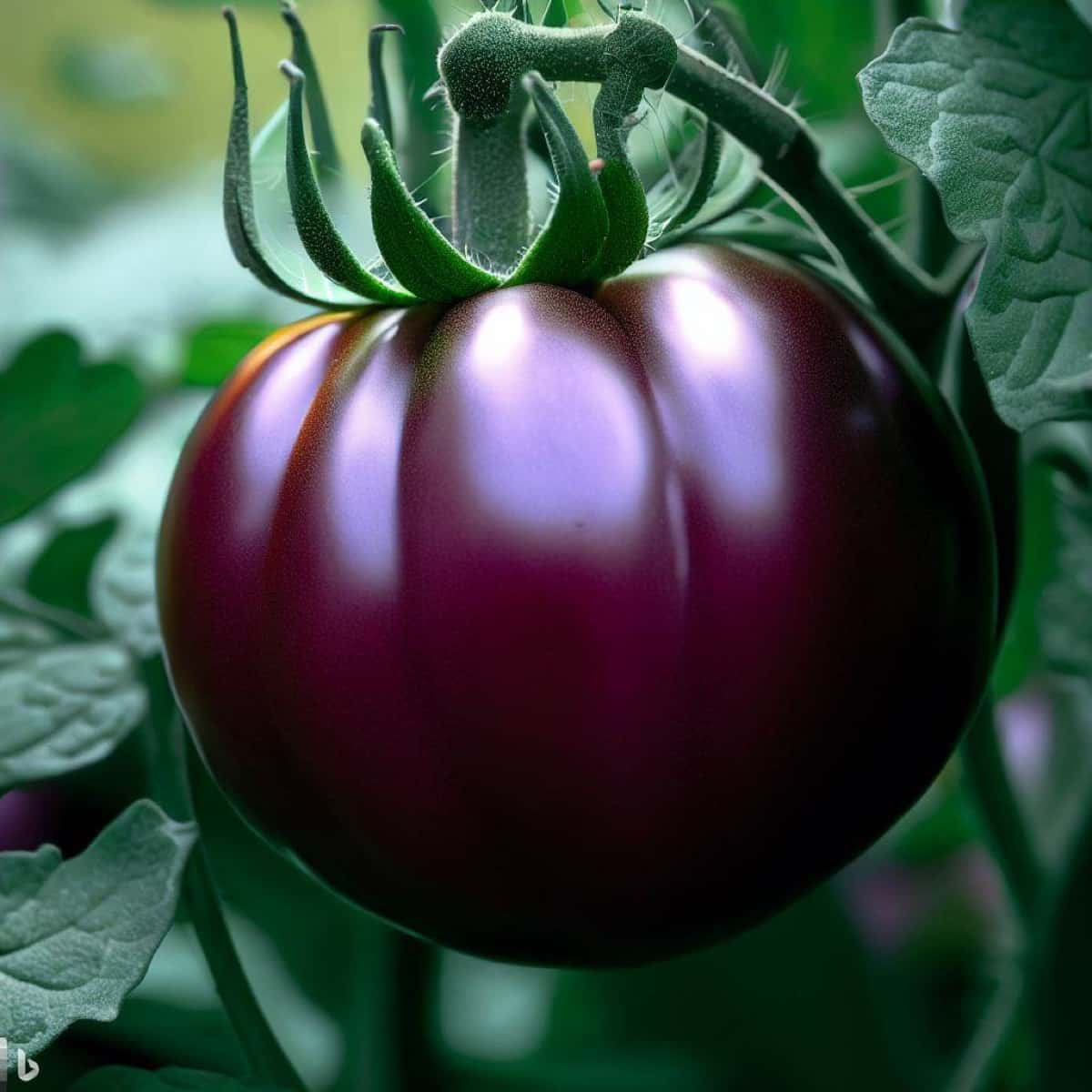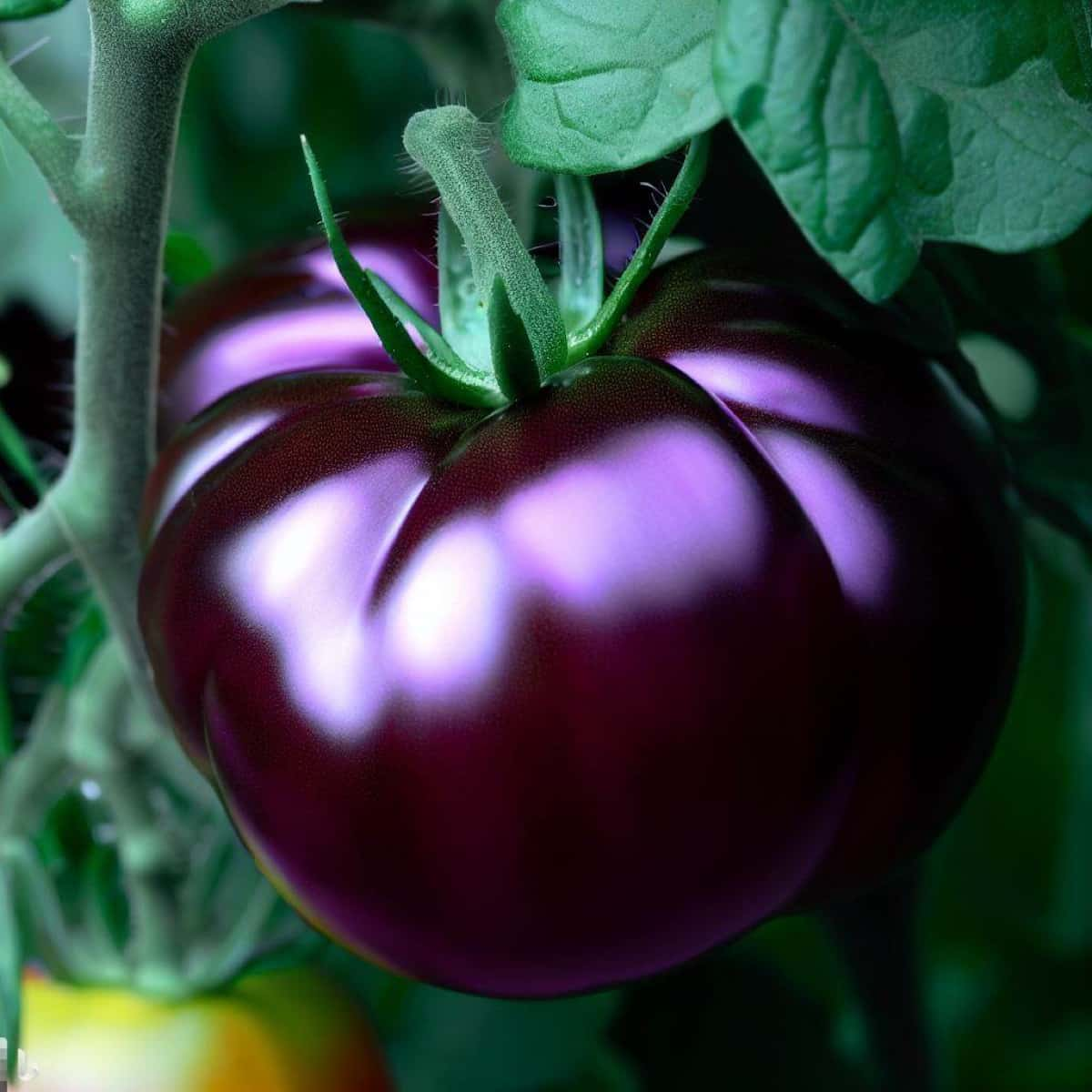Tomatoes are a famous and versatile fruit that can be grown in many home gardens. One variety that stands out is the Cherokee Purple tomato. Known for its rich, sweet flavor and deep purple color, this heirloom tomato is a favorite among gardeners and food enthusiasts. Cherokee Purple tomato plant height is usually up to 150 cm tall. If you’re interested in growing your Cherokee Purple tomatoes, this guide will provide the necessary steps to successfully grow and care for these variety of tomatoes.

How to Grow and Care for Cherokee Purple Tomatoes
Cherokee Purple Tomatoes Overview
- Cherokee Purple Tomatoes Appearance: Dusky rose color, green shoulders, and deep, rich flavor.
- Cherokee Purple Tomato Yield Per Plant: Cherokee Purple plant yields about twenty tomatoes per season.
- Cherokee Purple Tomato Days to Maturity: 80-90 days
Best Soil Conditions for Growing Cherokee Purple Tomatoes
Cherokee Purple tomatoes thrive in well-draining soil that is rich in organic matter. Loamy soil, a sand, silt, and clay mixture, is ideal for these tomatoes. The loamy soil retains enough moisture while allowing excess water to drain away, preventing soggy conditions that can lead to root rot. The soil pH affects nutrient availability to plants. Cherokee Purple tomatoes prefer slightly acidic soil with a pH range between 6.0 and 6.8.
Starting Cherokee Purple Tomato Seeds Indoors
Cherokee Purple grows reliably from seed, and because it is an heirloom variety, you can save seeds for planting the following year. Before the last frost, plant seeds indoors 6 to 8 weeks in advance.
- A cell tray or 4-inch pot should be filled with seed starting mix.
- Cover seeds lightly with mix after planting them about 1/8 inch deep.
- Water the pots or cells lightly or place them in a solid bottom tray with water. When seedlings sprout in 1 to 2 weeks, watering from the bottom encourages root growth and helps avoid damaging them.
- Once you’ve grown true leaves on the seedlings, you can pot them into soil-based potting mixes with fertilizer.
In case you missed it: How to Grow and Care for Super Sweet 100 Tomatoes: A Step-by-Step Planting to Harvest Guide

Transplanting Cherokee Purple Tomato Seedlings In Pots
- Choose pots at least a diameter of 12 inches with drainage holes at the bottom.
- Fill the pots with high-quality potting soil, leaving about an inch of space at the top.
- Water the seedlings thoroughly a few hours before transplanting to ensure they are well-hydrated.
- Remove the tomato seedlings from their original containers to avoid damaging the delicate roots.
- Dig a hole in the center of each pot, deep enough to accommodate the seedling’s root ball.
- Place the seedling in the hole, ensuring the top of the root ball is level with the soil’s
- surface.
- Fill the pot with additional soil, gently pressing it around the seedling to secure it.
- Water the newly transplanted seedlings thoroughly, ensuring the soil is evenly moist.
Providing Adequate Sunlight for Cherokee Purple Tomatoes
Cherokee Purple tomatoes thrive in full sun, requiring a minimum of six to eight hours of sunlight daily. While they can tolerate partial shade, prolonged periods of insufficient sunlight can lead to weak and leggy plants, reduced fruit production, and increased susceptibility to diseases. When planting Cherokee Purple tomatoes, position them in a way that maximizes their exposure to sunlight. Ensure your garden’s taller plants or structures do not shade the tomato plants during peak sunlight hours.
Watering Requirements for Cherokee Purple Tomatoes
Rather than watering shallowly and frequently, these tomatoes should be watered deeply and less frequently. During dry spells, deep watering encourages the roots to grow deeper, making the plants more resilient. You should water your plants once or twice a week, based on the weather and the soil’s ability to retain moisture.
Maintain a regular check on soil moisture to ensure it stays within the desired range. You should insert your finger up to your second knuckle into the soil. Water if the soil feels dry at this depth. You should wait a few days before checking the soil again if it feels moist.
Fertilizing Cherokee Purple Tomato Plants
When Fertilizing Cherokee Purple Tomato Plants in Pots, choosing the right fertilizer is crucial. Look for a balanced, slow-release fertilizer with an NPK (nitrogen, phosphorus, and potassium) ratio of 10-10-10 or 14-14-14. This will provide the necessary nutrients for the plant’s growth and fruit production.
To promote growth and fruit production, it is important to fertilize Cherokee Purple tomato plants at the right time and frequency. Start by applying a balanced fertilizer when transplanting the seedlings into the pots. This initial feeding will help the plants establish strong root systems. After the initial feeding, apply fertilizer every 4-6 weeks throughout the growing season.
In case you missed it: How to Grow and Care for Roma Tomatoes: A Step-By-Step Guide

Pruning and Supporting Cherokee Purple Tomato Plants
- Remove Suckers: Suckers are the small shoots that emerge from the leaf axils of tomato plants. Pinch them off gently using your fingers to avoid damaging the main stem.
- Remove Lower Leaves: Prune the lower leaves to the first set of fruit clusters. This prevents soil-borne diseases from splashing onto the leaves and reduces the risk of leaf-to-leaf contact.
- Maintain One or Two Main Stems: Cherokee Purple tomatoes are indeterminate plants that tend to grow tall and bushy. To manage their growth, choose one or two strong main stems and remove any additional stems that emerge.
Supporting Techniques
Stake Method: Place a sturdy stake or bamboo pole beside each plant at planting time. Gently tie the central stem to the stake using soft twine or tomato clips. As the plant grows, continue tying it to the stake regularly.
Cage Method: Alternatively, you can use tomato cages to support your Cherokee Purple tomato plants. Install a cage around each plant, ensuring it is tall enough to accommodate its growth. As the plant grows, gently guide the branches inside the cage for support.
Managing Pests and Diseases in Cherokee Purple Tomatoes
Unlike hybrid tomatoes, heirloom tomatoes like the Cherokee Purple do not have specific disease resistance. Because of this, they are vulnerable to every tomato disease and insect infestation. Among the most damaging pests are aphids, blister beetles, tomato hornworms, and tobacco hornworms.
Using insecticidal soap or a strong spray from the hose can often knock down small aphids. Handpicking is the best way to get rid of large caterpillars eating your plants. With Bt (Bacillus Thuringiensis), the worms will be eradicated before they become too large to cause real damage. Pesticides are often required to combat blister beetle infestations because they can wipe out crops within days.
Harvesting and Storing Cherokee Purple Tomatoes
Determining the Right Time to Harvest
- Color: Cherokee Purple tomatoes reach their full ripeness when they turn deep purple with a slightly reddish hue. Avoid harvesting them when they are still green or predominantly green.
- Texture: Gently squeeze the tomato. It should feel firm but not too hard. If it is too soft or squishy, it may be overripe and prone to spoilage.
- Harvest tomatoes individually as they ripen rather than waiting to pick them all at once. This allows the plant to continue producing more fruit.
Storing Cherokee Purple Tomatoes
Storage Conditions: Cherokee Purple tomatoes are best stored at room temperature, away from direct sunlight. Avoid storing them in the refrigerator, affecting their flavor and texture. Instead, find a cool, well-ventilated area, such as a pantry or basement, to store them.
Storage Containers: You should choose a storage container that allows for good air circulation. To prevent spoilage, do not use plastic bags or airtight containers. Rather than storing them in a basket, try storing them in a cardboard box or shallow basket.
In case you missed it: Time to Plant Tomatoes in USDA Hardiness Zones: Growing Season, Calendar for Indoor and Outdoor

Conclusion
You can successfully grow and care for Cherokee Purple tomatoes in your garden by following these instructions. With their unique flavor and stunning appearance, these tomatoes will be a rewarding addition to your harvest. Happy gardening!
- Feed Your Flock for Less: Top 10 Tips to Save on Chicken Feed
- Ultimate Guide to Ossabaw Island Hog: Breeding, Raising, Diet, and Care
- Hatching Answers: The Top 10 Reasons Your Chickens Aren’t Laying Eggs
- Eggs and Economics: Breaking Down the Cost of Raising Backyard Chickens
- Defend Your Greens: Proven Methods to Keep Iguanas Out of Your Garden
- Ultimate Guide to Cinnamon Queen Chicken: A Comprehensive Guide for Beginners
- Ultimate Guide to California Tan Chicken: Breeding, Raising, Diet, Egg-Production and Care
- Ultimate Guide to Marsh Daisy Chicken: Breeding, Raising, Diet, and Care
- 10 Types of Chicken Farming Businesses You Can Start for Profits